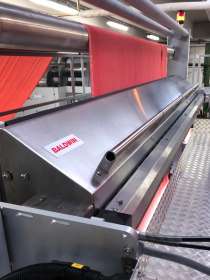New EFI Fiery Platform for Production Print
Electronics For Imaging, Inc. announces its newest digital front end (DFE) server solution for digital printing – the EFI™ Fiery® FS500 Pro platform. Fiery FS500 Pro will help print providers meet the challenges of shorter runs, faster turnaround times, less experienced staff, increased security standards and the need to reduce cost. The new Fiery DFE platform brings innovation to an extensive line-up of new digital printers coming for office, commercial, in-plant, packaging, and textile printing.
The Fiery FS500 Pro platform features five key areas:
- Faster job processing. Print providers will benefit from faster job processing time and up to 40% faster application launch time to produce more jobs per shift.
- Faster turnaround time for short runs. Advanced Fiery features speed up administration and production of print jobs in fast moving print shops.
- More sellable print, less waste. Fiery FS500 Pro has more tools available for detecting potential errors in files, reducing both production time and waste.
- More-accurate brand colors. A new Fiery TrueBrand solution for corporate users makes it easy to ensure accurate printing of brand colors from Microsoft Word or PowerPoint.
- Advanced security. Fiery FS500 Pro provides new features for high security environments, ensuring compliance with customer security requirements and industry standards.
EFI




















